-
Posts
5,589 -
Joined
-
Last visited
-
Days Won
15
Posts posted by LongLeftFlank
-
-
I suspect Kuderian is doing a little paraphrasing here. I remember I once had a polite argument with some leftists in a dormitory lounge long ago over the "Nuclear Freeze" stuff, and the fifth hand account that got back to me weeks later was that I began screaming "We must have More Bombs! More Bombs!" with spittle flowing from my mouth. Ideologues of all stripes hear only what they want to hear.
-
In a Makin playtest, I had a "Panicked" US squad (7 surviving) actually conduct a Banzai charge on one of the 3 surrounding Japanese positions that had it under fire. They entered the entrenchment at a run, under continuous fire, and actually killed two defenders. At that point the two surviving GIs surrendered.
-
Thanks, although it's CoonDog who did most of the heavy lifting on his IJA mods, including the helmet cover. I tweaked some of the Japanese faces to make them look more Vietnamese and stole Syrian SF fabric to create the black panamas. I tried to add the enameled DRV star on the front of the helmet but gave up.... the sandaled feet need more work as well. Unfortunately, it seems you can only use one kind of footwear at a time for each unit -- I'd have preferred to mix boots and sandals.
Modding isn't really my sweet spot though; all I want is a force that looks reasonably fit for use if you don't look too close. I might tweak the webgear and pouches tolook a tad less British, but otherwise this seems good enuff for now.... I can't even begin to do voice mods so they'll have to speak Japanese... I'll remove all the Banzais so it ain't as glaring.
Next step: French and colonial forces. US forces are the base of course, but boonie hats are one distinct challenge. The MAT49 is another
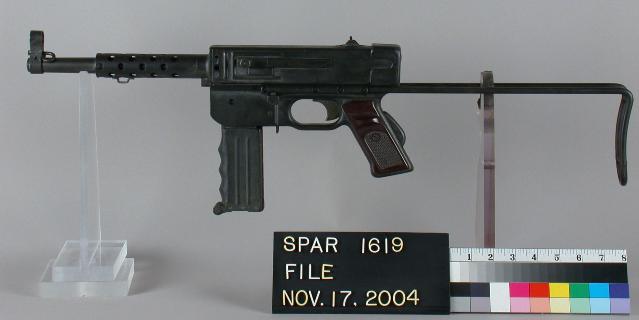
In light of the discussions in the Makin thread and elsewhere, I may actually eschew the full-scale battalion assaults and counterassaults that dominated DBP, and stick to company scale probes playable in a single sitting. I don't want to spend another 6 months struggling with this powerful but often frustrating engine, building out a lavishly detailed and researched historical scenario that almost nobody ever plays, or even looks at.
Kind of a pity, that, since what started this whole idea was Jason's post (OP) on DBP being a perfect case study of a large battle being won on almost purely macro attrition terms: the remorseless erosive power of artillery over time. With no amount of tactical skill, fortification or élan in any specific action making a damn bit of difference to the larger outcome once the chessboard is set. Almost the exact converse of the "for want of a nail" paradigm we tactical gamers (and so many military devotees of the "decisive battle") are so fond of.
-
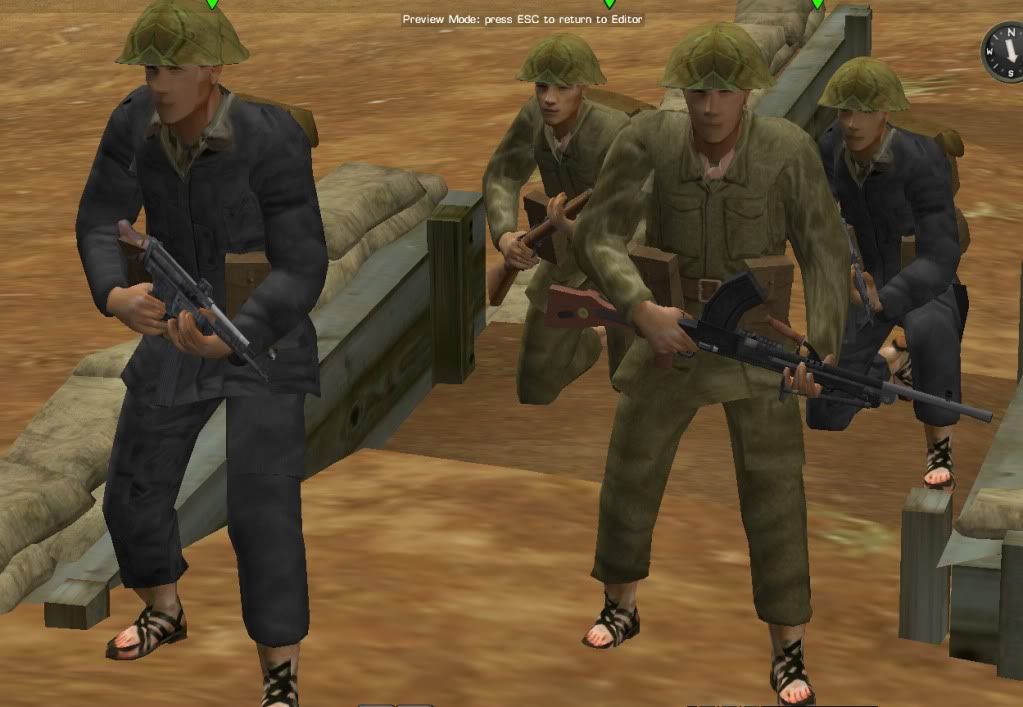
After some messing around, the British para tunics make the best base for Vietminh regulars; I also worked up alternative black pajamas and Ho Chi Minh sandals. As these are British troops, the StG44 is actualy a Sten, unmodded. It can be turned into a reasonable PPSh / Type 50 (box not drum mag) by rendering the front sight invisible.
-
OK, in one week my Tiny bocage recon scenario has gotten more downloads than Makin has in a month. Makin downloads seem to average 5-6 a week; no idea how long that'll last.
Not fretting about this; I'm genuinely curious to what extent that's a reflection of strong demand for single-sitting "grab 'n go" scenarios.
Or whether it's really limited community interest in gaming PTO.... Makin is distinctly lagging (40-50%)other large CW scens released about the same time. Or maybe a lot of people know how to use the Repo but are daunted by or can't be bothered with the whole modding "Z" file thing.
-
The only Syrians sporting body armor - if any at all - are the Syrian SpecOps guys. Even the Airborne look like ordinary Syrian infantry.
Maybe we cold do some kind of model swap for the Regulars - it's worth a try.
Regrettably, the effects of model swapping are solely visual; the game continues to "see" unarmoured troops even if they appear to be wearing flak vests. It wouldn't matter so much if it wasn't so impactful on survival. If you don't give them armour the NATO infantry will chew them and spit them out in any remotely even fight. Which doesn't at all reflect likely modern reality. Nor does that unsplittable squad nonsense, frankly. If I was a Russian player I'd feel pretty ticked off. Use the modded SF squads and model swap in the mech guys so you don't have to redo your mods -- you won't regret it.
Oh, and one of the stock Syrian faces -- mustached -- looks pretty Russian. The Rooskies like their 'staches.
-
Who will bell the cat?
I myself volunteer for the important role of sitting back and ridiculing the methodology of whoever does volunteer
 . As do many others here, I'll warrant. "Of all life's little pleasures I enjoy nitpicking the most!" -- Scott Adams
. As do many others here, I'll warrant. "Of all life's little pleasures I enjoy nitpicking the most!" -- Scott Adams -
It doesn't matter. John feels a Deep Need to be in possession of Mind Blowing Secret "Blue Pill*" Knowledge That Proves Everything You Ever Thought You Knew Is Maskirovka, and then to shout it from the rooftops. He and Suvorov were born for each other.
But unlike Aleisteir Crowley, the Baghwan or L Ron Hubbard, I assume it doesn't get him laid. And if it does, I'd prefer not to know anything.
Resurrect Dead on Planet Jupiter!
* or was it red pill? i forget.
-
Again, keep in mind that in game terms only Syrian SF actually have body armour (don't know about Syrian Airborne) This makes a HUGE difference in the survivability of infantry in game. In Baba Amr, SBurke's regime infantry are able to run through fusillades that annihilate my (unarmoured) uncons.
-
"CMBN can handle map sizes..."
Not the issue. The garrison was *10,000 men* at the start of the fight. 4000 more parachuted in over the course of the battle. 7000 were killed or wounded before the final fall of the position.
And the Viet Minh forces outside were even larger. They took something like 20000 casualties over the course of the whole seige.
There is simply no way you can play that out in a human lifetime with 4-6 man counters and 1 to 1 representation for losses and giving orders to every team every minute. It is just impossible.
Agreed, but I think you misunderstand me. If one wanted to (I don't, personally), one could play one of the Dien Bien Phu hex wargames folks have alluded to above, much like Broadsword56 did with the Balkoski ST LO game. Then use that to figure out which specific actions you want to play through at CM scale. You'll indeed be playing for the rest of your days if you try to play through each and every action.
The idea is that you create a single master CMBN map containing the basic topography and the outline of the various terrain features (sketched in clover or red dirt or whatever). Its only use is as a base template for smaller carve-out submaps. As you decide which of the most important, interesting or closely matched individual battalion level actions (60-150 minutes) you're interested in playing through, you flesh out the detailed terrain and fortifications on that submap and then build and play your CMBN scenario. Unfortunately, you're going to know the enemy's forces and plans unless you do it on a QB basis against a trusted opponent (with ground rules).
That's what Broadsword56 does in Normandy using the ST LO boardgame; SBurke is his general opponent of choice, although I considered participating too until I got too swamped in other projects. Me, I'm not that ambitious; I don't even want to do a formal Campaign. I've now built two huge master maps -- downtown Ramadi (Iraq) and the Le Meauffe-Le Carillon area, with one submap scenario for each published to date. My intent is to do a series of closely researched historical scenarios that are effectively vignettes, illustrating how tactics evolved for both sides over time. That's why I'm not just cranking out glorified QBs. But I keep getting distracted by new things like Makin Atoll and now, DBP. Ah whatever, it's the journey not the destination.
Understand, there's no way of automating this process at present. BFC is not going back down the CMC rabbit hole, at least not before true Co-Play materializes in some fashion. Even then it isn't likely IMHO.
-
Whose freekin' anthill mod are we using? Seriously, this thing looks more like Starship Troopers!
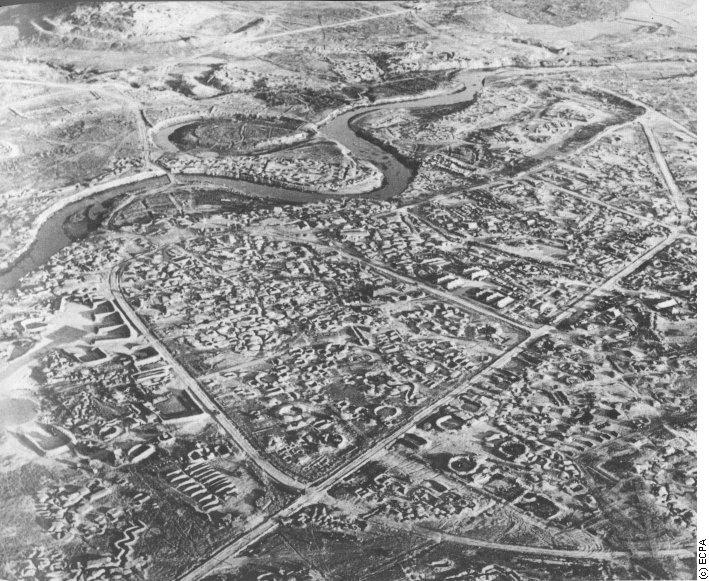
-

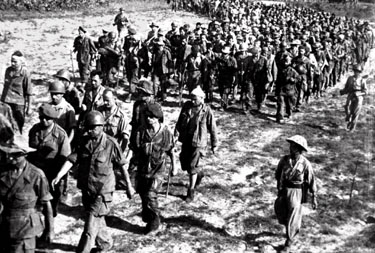
On the modding front, not that much new needed. About 5 of CoonDog's Japanese faces could also pass for Vietnamese kids. The British clamshell helmet with a large mesh works pretty well.
Need someone to turn the StG44 into a PPSh41 with box clip.... cut the barrel length and add that barrel protector? (this is a visual only -- in game terms it will still behave like a Sten). The Chinese Bren/Nambu is good enuff even with the curved magazine.
The IJA tan tunics will work (the Chinese-equipped 308th and dac cong shown here) -- maybe do a ragtag mix with some black pajamas for the less elite assault formations that Giap scraped together later in the battle from supply cadres. The other challenge will be to get those chest ammo pouches to show up....
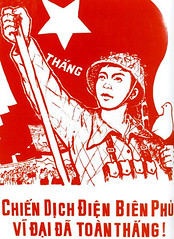
-
Here are some examples of traditional wargames where, in contrast to CM, the scale is too *high* to provide any meaningful insights into what went down at DBP, other than "he had more guys (counters and combat factors) than you, and eventually you lost". True, at bottom, but not insightful to my mind.


-
I suspect he meant this way cool early German uberpanzer was used here about as intensively as anyplace short of the north pincer of Zitadelle. Face it, a lot of CMers, of all ages and grognard levels like to play around with the cool ubertanks now and then..... Nothing wrong with that.
-
Oh I'm just at the talking stage here. At some point I will be gainfully reemployed, at which time projects like this will go on the shelf and my forum post count will fall off, probably to the relief of some folks here. My focus to date has been on finishing the stuff I've already started but this idea intrigued me.
I am also hoping some French grognard will float in here and run with the ball -- I can happily do the map but I have a lot less enthusiasm for the historical research that's needed to do a truly faithful historical scenario series. Ramadi and Makin were a LOT of freekin' work although I'm really glad I did them.
-
My own plate is far too full to volunteer for this project (in any case, I know very little about the modern Russian army), but good luck to you!
I never bought the Brits module, so I actually have no idea whether the Syrian Airborne have body armour. If not, the Syrian Special Forces squads might do.
To modernize the Syrian regime mech forces for my Baba Amr scenario, I bought a Guards motor rifle company, took their BMPs and then dismounted the Syrian squaddies, sticking them away in a corner as a Reinforcement group that "arrives" after the scenario (keep in mind they still count for casualty VC btw!). I then bought a Special Forces company, sans jeeps, and stuck them in the BMPs, using Ryujin's mod to put them in camo instead of riot team black.
Voila, updated Syrian mech troops with body armour and less anachronistic helmets (you can always model swap the helmets if you don't like those steel riot gear pots). Mod the faces and voices and you've got Russian infantry squads -- splittable, with organic RPG-29s. No idea how closely that resembles their TOE in 2002, but it's definitely closer than the Syrian regulars.
-
Fall is the best source on it and an excellent history.
The biggest issues I can see are scale - it is too big to do literally - and engineering changes.
Understand, the Viet Minh dug approach trenches and parallels at night until they ringed each of the strongpoints, pushing them in some cases down to 80 yards away, by the end. (300 yards earlier in the fight). They attacked "over the top" after a barrage only from that far away, and continually sniped at anything exposed from these approach trenches. The French counterattacked vigorously, sometimes to wreck one of these sets of works, sometimes to clear out Viet Minh AA pushed in too close, and frequently to retake lost portions of their own works.
As a series of scenarios you could try it. But you can't change the landscape with field works within the confines of a CM scenario, to anything like the extent it happened here. It is an "Art of Siege" scenario (old SPI monster game if that isn't clear).
WRT scale, I wouldn't bother with the outlying positions (Isabelle, Gabrielle, etc.), just focus on the airstrip perimeter. CMBN can handle map sizes up to about 2x2 km in practice which would be the "master map" -- each scenario would then be played out on a series of carve-out submaps.
WRT sapping, the "digging" phase wouldn't be represented at CM scale of course. Not a very interesting game. What the scenario designer (not necessarily me -- maps are my sweet spot IMHO!) would do is modify the submap to add the trench lines for the appropriate scenario. Plus whatever fortifications have changed (built, destroyed) in the meantime.
If what you're thinking of is for the VM player to stand in the shoes of General Giap, or a division commander and determine the sequence of the entire battle -- which positions to assault next and where the mineworks go, well, that's probably well beyond the pale for CM. For a campaign, the scenario "tree" just gets too complex.
Broadsword56 has been trying something very interesting in that vein, playing out a VASSAL version of Balkoski's ST LO boardgame and then gaming out selected "fair fights" (i.e. could go either way) for key hexes using CMBN maps. His objective is less to "win the tournament" than to play out and understand at a granular level the foxhole level dynamics that drove the larger outcomes. "For want of a nail", all that.
But I certainly don't have the free time to do that.... not even sure I have time to do this!
-
One initial thought: most of the effects of the prolonged bombardment on the defenders' bayonet strength (noncombatants aren't generally represented in CM of course) won't be gamed out. It will instead be predetermined -- reflected in the condition of the troops at the start of the scenario(s):
- Reduced squad headcounts
- Weakened/Unfit state
- Lowered morale (or later, desperate fanaticism)
- Disrupted C3
- Damaged fortifications
Some of these factors also afflicted the VM forces over the course of the battle, for different reasons.
One might argue that if this battle was largely an artillery slugfest, it is inappropriate to the CM scale since you have VM assaulting positions that have already been attrited by artillery pregame. Still potentially an interesting fight of course, since even the doomed defenders fought like tigers, but predetermined.
Perhaps the right course of action would be to compare this effort with the prior battle of Na San, where the VM didn't bring in enough artillery and the French airhead was able to beat them off with heavy losses.
-
Merci bien! Of course I've spent enough time in the monsoon belt of Southeast Asia to know that those contour lines are just a start, pinning out the elevations. That entire valley will be intensely cut by rivulets and gullies, filled with brush and trees except where fields of fire have been cleared.
-
On an operational scale, artillery fire is brutally effective. But not because individual shells cause multiple casualties as a rule, nor due to great responsiveness or precision of fire. Instead it takes industrial quantities of ammunition delivered over extended periods of time, to bleed its targets white.
I want to illustrate this with some facts about a later fight that is famous for having been largely decided by artillery, and by an unexpected artillery edge for the winning side. It still featured large scale and intense infantry fighting, which caused a significant portion of the casualties on both sides (more to the attackers than the defenders). The fight I am thinking of is the seige of Dien Bien Phu in the French Indochina war.
The attrition phase of that fighting lasted about 7 weeks, from mid March to early May 1954. In that period the French defenders (with their local allies) suffered 7200 casualties - some to infantry fighting certainly, but to get a high estimate of artillery effectiveness we can ascribe all of them to the beseigers' artillery. (The true portion may run as low as 5000 of them, but it was the leading cause of infantry losses for those defenders, as in the world wars).
What artillery was available over that period and how much did it fire? Answer, about 200 tubes, about 50 each of 120mm mortars, 105mm howitzers, 82mm mortars, and 75mm pack howitzers. Before the battle began the Viet Minh had at least 44,000 rounds for those weapons on hand, and more arrived over its course. The best estimates available (necessarily rough) put the 105mm expenditure alone at 30,000 rounds, and all other calibers at somewhat more than 100,000. Call it 130,000 rounds total, of field artillery calibers.
This means it took on average about 20-25 rounds fired to cause each defender casualty. (It would be 18 if all were caused by artillery fire). The average rate of fire was only 12 rounds per tube per day. Supply of shells was the overall regulator, and to adapt to its limitations fire was concentrated into the time windows immediately before infantry attacks, during them, and when movement could be seen by the defenders - with a portion of the shells delivered at all other times, to be sure.
This was a well located target, half a mile on a side at the start of the fight and shrinking during its course - unable to move, and under continuous observation from higher ground from every point on the compass. The defenders were dug in, but lacked full overhead cover for most of the fighting positions (more on that if anyone is interested). The rate of loss achieved against that dug-in target - 20-25 shells per man down - was still sufficient to bleed a defending force of over division strength into combat ineffectiveness in the space of 2 months.
I repeat that this counts as a highly successful use of artillery on the operational scale. It does not require and does not typically achieve significantly higher ratios of losses inflicted to shells fire, than this.
Notice, 200 tubes firing thousands of shells at a target of that size did not simply wipe out the defenders in CM paced, tactical time scales. Instead it took shell expenditures in the 5 figures over nearly 2 months, to kill or wound about half the total garrison (counting arriving reinforcements).
I will pause for comment at this point...
Jason, I think nobody's commented on this because nobody really disagrees with your case.
One thing though, I don't know where you get your 1/2 mile square target area. I'm no expert on DBP (look John, I'm Wikiing too!
 ), but unless this is wrong....
), but unless this is wrong....However, even though you're more challenging to poke with a stick than Kettler, I may have bigger fish to fry.
-
 On an operational scale, artillery fire is brutally effective. But not because individual shells cause multiple casualties as a rule, nor due to great responsiveness or precision of fire. Instead it takes industrial quantities of ammunition delivered over extended periods of time, to bleed its targets white.
On an operational scale, artillery fire is brutally effective. But not because individual shells cause multiple casualties as a rule, nor due to great responsiveness or precision of fire. Instead it takes industrial quantities of ammunition delivered over extended periods of time, to bleed its targets white.I want to illustrate this with some facts about a later fight that is famous for having been largely decided by artillery, and by an unexpected artillery edge for the winning side. It still featured large scale and intense infantry fighting, which caused a significant portion of the casualties on both sides (more to the attackers than the defenders). The fight I am thinking of is the seige of Dien Bien Phu in the French Indochina war.
The attrition phase of that fighting lasted about 7 weeks, from mid March to early May 1954. In that period the French defenders (with their local allies) suffered 7200 casualties - some to infantry fighting certainly, but to get a high estimate of artillery effectiveness we can ascribe all of them to the beseigers' artillery. (The true portion may run as low as 5000 of them, but it was the leading cause of infantry losses for those defenders, as in the world wars).
What artillery was available over that period and how much did it fire? Answer, about 200 tubes, about 50 each of 120mm mortars, 105mm howitzers, 82mm mortars, and 75mm pack howitzers. Before the battle began the Viet Minh had at least 44,000 rounds for those weapons on hand, and more arrived over its course. The best estimates available (necessarily rough) put the 105mm expenditure alone at 30,000 rounds, and all other calibers at somewhat more than 100,000. Call it 130,000 rounds total, of field artillery calibers.
This means it took on average about 20-25 rounds fired to cause each defender casualty. (It would be 18 if all were caused by artillery fire). The average rate of fire was only 12 rounds per tube per day. Supply of shells was the overall regulator, and to adapt to its limitations fire was concentrated into the time windows immediately before infantry attacks, during them, and when movement could be seen by the defenders - with a portion of the shells delivered at all other times, to be sure.
This was a well located target, half a mile on a side at the start of the fight and shrinking during its course - unable to move, and under continuous observation from higher ground from every point on the compass. The defenders were dug in, but lacked full overhead cover for most of the fighting positions (more on that if anyone is interested). The rate of loss achieved against that dug-in target - 20-25 shells per man down - was still sufficient to bleed a defending force of over division strength into combat ineffectiveness in the space of 2 months.
I repeat that this counts as a highly successful use of artillery on the operational scale. It does not require and does not typically achieve significantly higher ratios of losses inflicted to shells fire, than this.
Notice, 200 tubes firing thousands of shells at a target of that size did not simply wipe out the defenders in CM paced, tactical time scales. Instead it took shell expenditures in the 5 figures over nearly 2 months, to kill or wound about half the total garrison (counting arriving reinforcements).
I will pause for comment at this point...
JasonC posted this in the CMFI artillery thread and it got me thinking, so I brought it over here to kick around some more. Just wool-gathering at this point, but doing PTO Makin persuaded me that a great deal is possible with this game.
I was thinking that it would not be impossible to build a reasonable simulacrum of the airstrip perimeter and bastions using tools available in CMBN. We don't have M24 tanks (yet), sure, or napalm, but the other tools are pretty much all there. British airborne make reasonable Viet Minh regulars -- mod faces and helmets, Stens to PPSh41, etc.
In addition to being an interesting series of scenarios, perhaps we'd be able to test Jason's model above and see how quickly the historically available VM artillery would cut the French defenders to ribbons. Then calibrate how much it needs to be nerfed to obtain results more in line with reality.
Right, now off to the library to reread Bernard Fall's book: the Wikipedia entry seemed pretty decent but need to confirm.
A certain amount of OCD is also necessary in science.

-
Well hey, the Dictator next door has spent his entire adult life foaming at the mouth about Bolshevism; of course you're going to assume that sooner or later you'll be fighting his impressive war machine. And sometimes the best defence is a good offence, fine and dandy. So assuming that it doesn't get us shot for Trotskyite left deviationism, let's think about these things, work up some map exercises, etc.
But that's a LONG way from supporting ICEBREAKER, especially that tosh about 15 airborne divisions sitting in the Crimea ready to flutter down and seize the Ploesti oilfields. I think all that time sitting around shivering while on spetsnaz exercises went to the guy's brain a little. He's the classic hammer looking for nails everywhere.
-
Just noticed this thread for the first time. Great project!
What force are you thinking of using for the 2000 era Russian infantry? Syrian airborne troops maybe? I'm assuming body armour became standard for Russian forces after Chechnya, in imitation of Western practice. And they dumped those steel pot helmets even earlier than that, didn't they?
-
Suvorov is a brilliant storyteller and observer of the human condition -- AQUARIUM is on my top 20 list of favourite books -- but yeah, he's deep in fantasyland for anything he hasn't witnessed with his own eyes. That whole ICEBREAKER thesis (basically Hitler beat Stalin to the punch by 6 weeks) is pure rubbish, and is likely prompted by some other you-had-to-be-there agenda that was likely obsoleted by the fall of the Berlin Wall.
Deep in vaults in Ottawa, I have no doubt, are contingency plans for the prompt military occupation and administration of portions of America in the event the Superpower decapitates itself up in a nuclear war that somehow spares Canada (what the heck is that novel called again?). The existence of documents does not imply intention to act. Even though if I'm put to it I'm sure I can cherry pick substantial "evidence" that Canuckian hordes are poised to swarm across the American border at any moment!
Re the OP, it isn't all that surprising that by 1945 the Soviets had finally mastered the art of conducting deep insertions of airborne/airlanded combat detachments into enemy rear areas, even though they never tried that in Eastern Europe (Yugoslavia, maybe?). Just as the US had reached the point where it could almost casually drop Rangers or OSS men on top of Corregidor, prison camps, Thailand, etc. Complete mastery of the skies does help a lot (probably why neither side risked such tricks with the Germans, as moribund as the Luftwaffe was by then).



CMBN: Dien Bien Phu!
in CM Normandy Maps and Mods
Posted
Uses Canadian Airborne as a base mod, with some "ragtagging" of uniforms. Bare forearms are key and it doesn't actually look too bad. The Vietnamese auxiliary troops are placeholders -- they keep looking like they're wearing boiler suits.